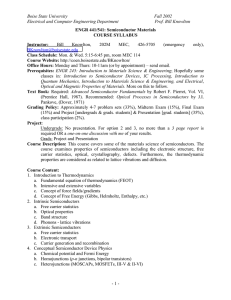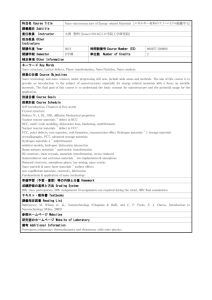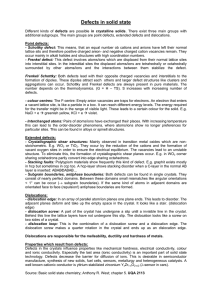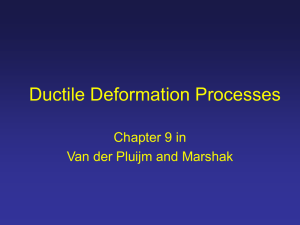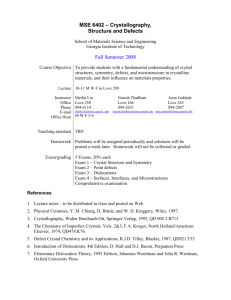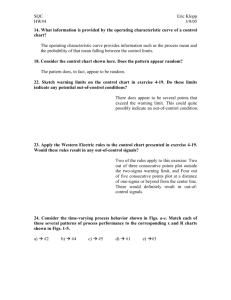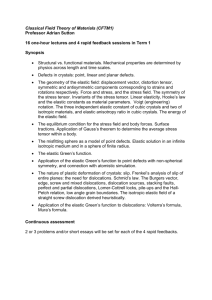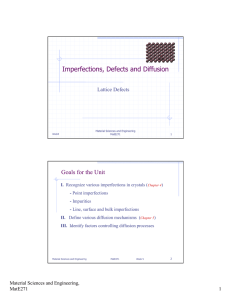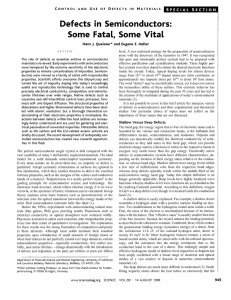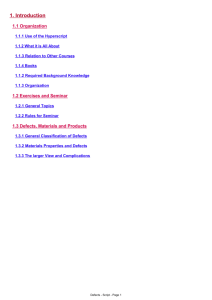EEE 598: Defects in Semiconductors
advertisement
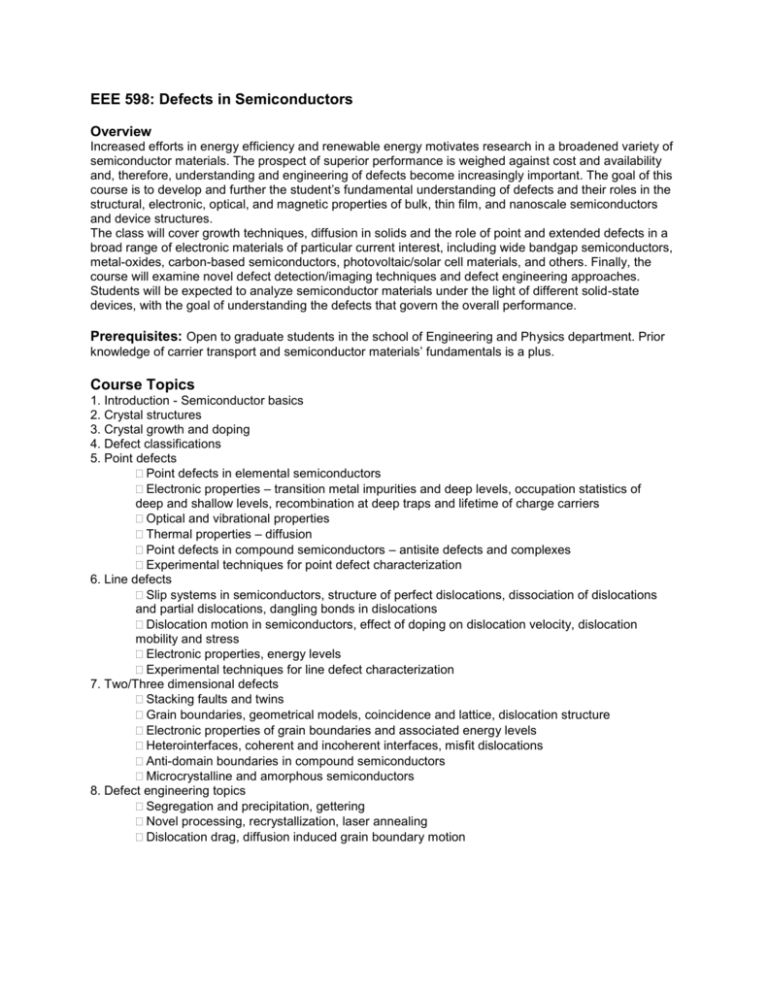
EEE 598: Defects in Semiconductors Overview Increased efforts in energy efficiency and renewable energy motivates research in a broadened variety of semiconductor materials. The prospect of superior performance is weighed against cost and availability and, therefore, understanding and engineering of defects become increasingly important. The goal of this course is to develop and further the student’s fundamental understanding of defects and their roles in the structural, electronic, optical, and magnetic properties of bulk, thin film, and nanoscale semiconductors and device structures. The class will cover growth techniques, diffusion in solids and the role of point and extended defects in a broad range of electronic materials of particular current interest, including wide bandgap semiconductors, metal-oxides, carbon-based semiconductors, photovoltaic/solar cell materials, and others. Finally, the course will examine novel defect detection/imaging techniques and defect engineering approaches. Students will be expected to analyze semiconductor materials under the light of different solid-state devices, with the goal of understanding the defects that govern the overall performance. Prerequisites: Open to graduate students in the school of Engineering and Physics department. Prior knowledge of carrier transport and semiconductor materials’ fundamentals is a plus. Course Topics 1. Introduction - Semiconductor basics 2. Crystal structures 3. Crystal growth and doping 4. Defect classifications 5. Point defects Point defects in elemental semiconductors Electronic properties – transition metal impurities and deep levels, occupation statistics of deep and shallow levels, recombination at deep traps and lifetime of charge carriers Optical and vibrational properties Thermal properties – diffusion Point defects in compound semiconductors – antisite defects and complexes Experimental techniques for point defect characterization 6. Line defects Slip systems in semiconductors, structure of perfect dislocations, dissociation of dislocations and partial dislocations, dangling bonds in dislocations Dislocation motion in semiconductors, effect of doping on dislocation velocity, dislocation mobility and stress Electronic properties, energy levels Experimental techniques for line defect characterization 7. Two/Three dimensional defects Stacking faults and twins Grain boundaries, geometrical models, coincidence and lattice, dislocation structure Electronic properties of grain boundaries and associated energy levels Heterointerfaces, coherent and incoherent interfaces, misfit dislocations Anti-domain boundaries in compound semiconductors Microcrystalline and amorphous semiconductors 8. Defect engineering topics Segregation and precipitation, gettering Novel processing, recrystallization, laser annealing Dislocation drag, diffusion induced grain boundary motion
